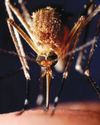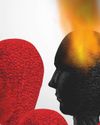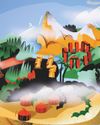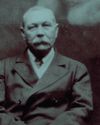Poignant, surprising and otherworldly, this new photography project by Reiner Riedler shows medical machinery in a fresh light

“I came from outside into a dark room, with all this soft light and beeping,” says Riedler, who is based in Vienna. “It was such a strong feeling of safety – I trusted the machines.”
Six months later he started to photograph machines that are used to save human lives, initially spending time in operating theatres. He soon decided he was uncomfortable with trying to photograph unconscious people and busy doctors.
Instead, he chose to photograph the technology itself, beginning with common hospital equipment such as dialysis machines. “Then I started to go to museums and archives, and I became more interested in those that tell a story, or those whose shape is metaphorical somehow,” says Riedler.
TWO LEGS GOOD
The Torque Controlled Humanoid Robot, or TORO for short, is used to study walking and balance. Keeping a 75kg machine upright is a huge challenge, but TORO can use its whole body to recover balance by, for example, grabbing onto solid objects or dropping to one knee. The aim is to create a robot that’s comfortable in domestic settings, able to climb stairs, step over obstacles and – we hope – do the dusting.
SAFE PLACE
Incubators provide controlled warmth, humidity and oxygen for premature or sick newborns, and allow continuous monitoring of a baby’s core body temperature. A double air curtain helps maintain a balanced climate inside the incubator. The incubator shown here is not the one that saved his now four-year-old son’s life, but it still provokes strong feelings for Riedler. “The machine itself looks almost alive inside,” he says.
This story is from the September 2017 edition of BBC Earth.
Start your 7-day Magzter GOLD free trial to access thousands of curated premium stories, and 9,000+ magazines and newspapers.
Already a subscriber ? Sign In
This story is from the September 2017 edition of BBC Earth.
Start your 7-day Magzter GOLD free trial to access thousands of curated premium stories, and 9,000+ magazines and newspapers.
Already a subscriber? Sign In

World's First Malaria Vaccine
The World Health Organization’s director-general hails ‘historic moment’ as mass immunisation of African children begins

Is River Pollution Putting The Species In Jeopardy Again?
Ten years ago, it was jubilantly announced that o ers had returned to every county in England. But is river pollution putting the species in jeopardy again?

The Big Burnout
Long hours, low pay and a lack of appreciation — among other things — can make for a stressful workplace and lead to burnout. It’s something we should all be concerned about, because over half of the workforce reports feeling it

Putting Nature To Rights
More countries are enshrining the right to a clean environment into law. So if a company or government is impinging upon that right, you could take them to court

Mega Spaceship: Is It Possible For China To Build A Kilometre-Long Spacecraft?
Buoyed on by its successful Moon missions, China has launched a five-year study to investigate the possibility of building the biggest-ever spacecraft

Are We Getting Happier?
Enjoying more good days than bad? Feel like that bounce in your step’s getting bigger? HELEN RUSSELL looks into whether we’re all feeling more cheery…

“Unless the Japanese got the US off their backs in the Pacific, they believed they would face complete destruction”
Eighty years ago Japan’s surprise raid on Pearl Harbor forced the US offthe fence and into the Second World War. Ellie Cawthorne is making a new HistoryExtra podcast series about the attack, and she spoke to Christopher Harding about the long roots of Japan’s disastrous decision

Your Mysterious Brain
Science has mapped the surface of Mars and translated the code for life. By comparison, we know next to nothing about what’s between our ears. Over the next few pages, we ask leading scientists to answer some of the most important questions about our brains…

Why Do We Fall In Love?
Is it companionship, procreation or something more? DR ANNA MACHIN reveals what makes us so willing to become targets for Cupid’s arrow

Detecting the dead
Following personal tragedy, the creator of that most rational of literary figures, Sherlock Holmes, developed an obsession with spiritualism. Fiona Snailham and Anna Maria Barry explore the supernatural interests of Sir Arthur Conan Doyle